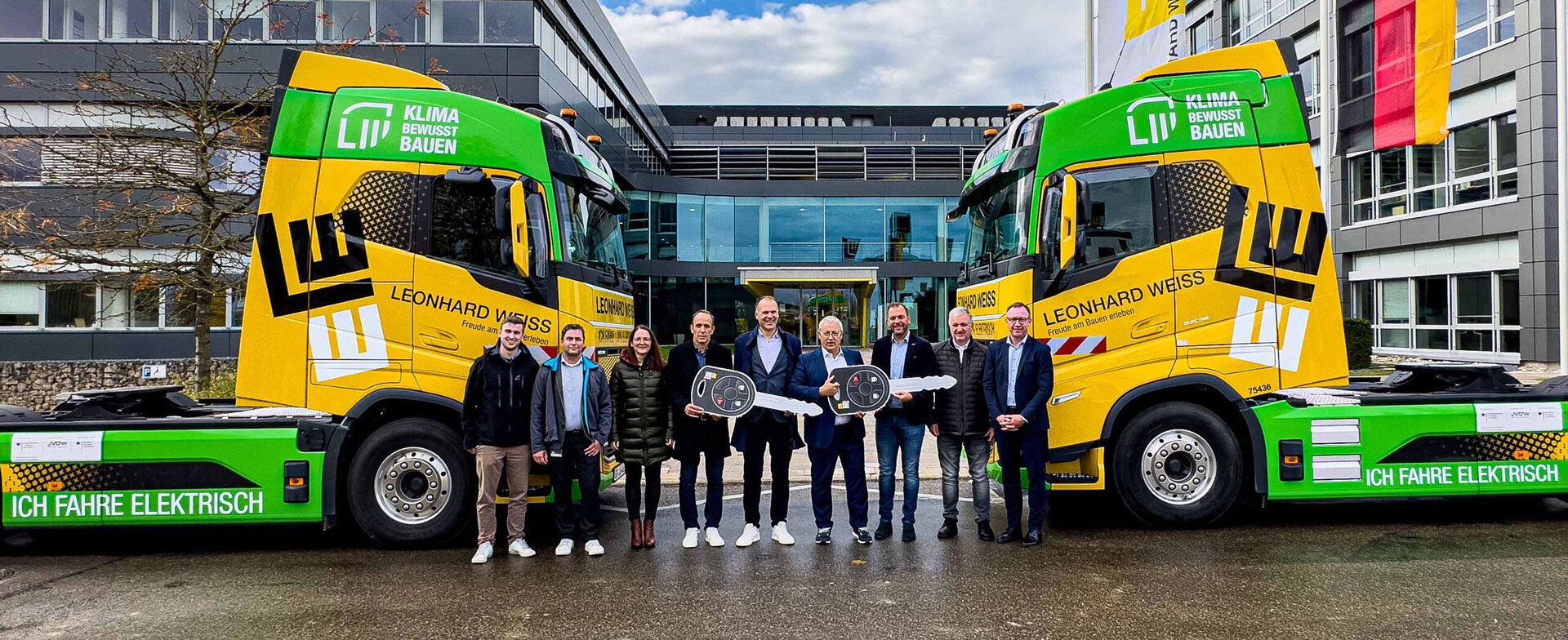Zukunftsprojekt
Climate-conscious construction site in Tübingen city centre
A warm day in August, a building site in the center of Tübingen's old town. District heating pipes are being installed and house connections have to be laid, which means tearing up the road, digging, jackhammers, the full programme. Actually an imposition for residents and tourists who crowd through the historic alleyways here, not to mention the neighbouring shop owners. But this building site is different. The wheel loader hums away, the worker at the vibrating machine does not notice any exhaust fumes. There are many small clues that indicate that something big is happening something big is happening here.
We are at the first climate-conscious construction site, a joint pilot project by LEONHARD WEISS and Stadtwerke Tübingen, from summer 2023. In Metzgergasse, the concept of the emission-reduced construction site is undergoing a practical test – and setting an important example. After all, the construction industry is one of the main contributors to greenhouse gas emissions and the issue of sustainability is becoming increasingly important to customers and legislators. In Scandinavian countries, climate-neutral construction sites have already been in place for several years. In Germany, LEONHARD WEISS now also wants to break new ground. But is a construction site with reduced emissions even economical? And what does this mean for day-to-day work?
Metzgergasse Tübingen
In the evening, when the work is done, the electric excavator whirs through the alleyways on its way to the charging point. Passers-by are regularly startled because they can't hear the quiet construction machine coming, report the colleagues on the construction site. It is 300 meters to the charging point that LEONHARD WEISS has set up. The construction machines can easily last a working day, but they have to be plugged in after work. The small electrical appliances such as rammers and floor cutters can also be charged directly at the construction site. The electricity is generated by solar panels on the construction container.
There's no doubt about it: charging management is a change for employees. If a battery of a hand-held device is empty, it cannot simply be replaced, but must be recharged immediately so that there are no delays later on. A major advantage of electrification, especially for inner-city construction sites, is the reduced noise pollution. LEONHARD WEISS' goal is for electricity to be the main source of energy by 2030, followed by synthetic fuels such as HVO. At the climate-conscious construction site in Tübingen, lorries and flatbed trucks are also powered by HVO, a diesel substitute made from renewable raw materials such as used cooking oil and waste from the food industry. HVO is still more expensive than conventional fuel and is also not available at any filling stations, which is why it has to be stored on site in 1,000-liter tanks. However, HVO saves 90 per cent of greenhouse gases and also produces significantly less soot.
Back to Metzgergasse in Tübingen. Normal building site operations are in full swing, but life goes on around it. A shop owner advises a customer with the shop door open, even though the excavator is working just a few meters away. People chat, children stop and watch. Everyday life has returned to the climate-conscious construction site. In the meantime, every move is perfect, machines are routinely started at the touch of a button and regularly recharged. The results after completion of the construction site: surprisingly positive.
Because everyone involved got involved in the project, the processes were quickly established and everything went smoothly. The residents in Metzgergasse confirmed that they had to deal with far less noise and odour pollution typical of construction sites than expected. In addition to this valuable experience, the facts also speak for themselves: over the entire period of their use, the e-machines have saved around 3.4 tonnes of CO2. Thanks to the use of HVO, a further 4.4 tonnes of CO2 have been saved. The costs of the innovative construction site still exceed those of conventional civil engineering work – partly because e-machines are even more expensive to purchase. In the pilot project, LEONHARD WEISS and the municipal utilities have consciously accepted and jointly borne the additional costs – and thus gained valuable experience for the future. Because as Robert Kreß, Managing Director of Road and Network Construction, says:
The energy transition will not happen by itself. It has to be built.
